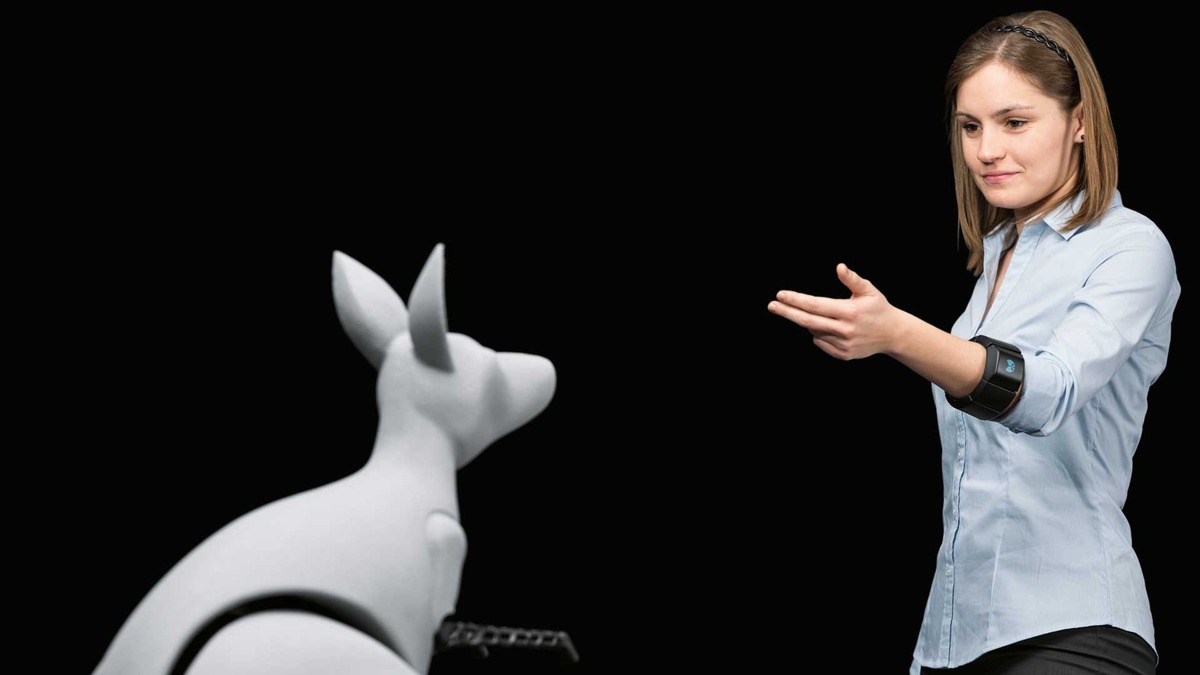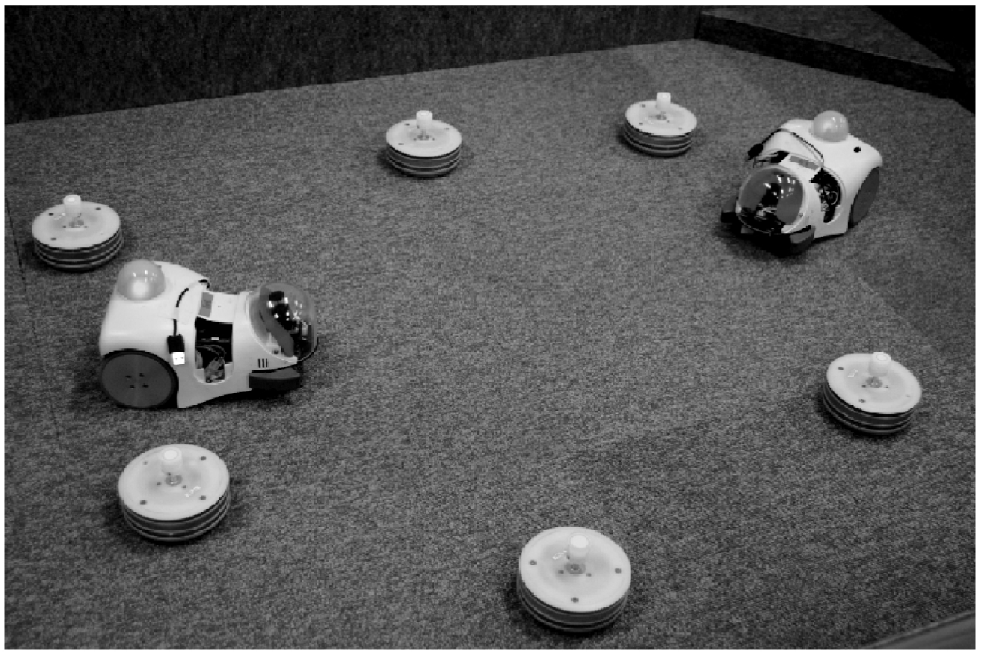"Sex" robots
Robots are getting closer to being able to say that they are alive. Last week, the German company Festo presented a work-kangaroo.

The robot with a height of only 39 cm imitates very well the movements of a kangaroo, it is controlled by the movements of the user's hands.
')
Also last week there was an article that is the result of using robots for scientific research.
Stefan Elfwing from the Okinawa Institute (Japan) found a way to study thousands of generations of animals for several days without using living things. The scientist created and programmed a colony of small robots on wheels in such a way that they needed to be recharged from nearby charging devices, as well as engaged in “pairing”.

While the robots did not reproduce offspring, but allowed to study under what laws will go development. Each robot was equipped with a video camera to search for a “partner”. “Sex” was carried out through an infrared port, which allowed copying “genes” after a suitable partner was found.
As we know, the simultaneous pursuit of both the “food” and the “partner” is a rather tedious process, and the robots had to figure out how best to spend energy to survive and spread their “genes”. After 70 experiments, Elfwing discovered that 75% of robots turned into what he called “runners”, or robots, who actively sought to mate. The rest turned into “gatherers”, or robots, who first of all wanted to charge the batteries and mate only when all the conditions were created for this (for example, the infrared ports are conveniently close together).
As it turned out, all this looks like behavior patterns in the wild, and such robots serve as a perfectly acceptable way to study animals. Elfwing hopes in future to continue to study the laws of evolution with the help of robots. “In this experiment, the robots were hermaphroditic, everyone could mate with everyone,” the article says. “In the next stage, we will divide the robots into“ male ”and“ female ”gender, which will affect“ reproduction ”.
It seems that, given the development of 3D printing, robots will be able to reproduce themselves in the foreseeable future. Who knows, it is possible that in order for them to reach the highest level of development it will be enough just to launch their evolution, similar to the evolution in living nature? For example, natural selection, when the strongest robot defeats the weakest, and leaves offspring, through a thousand generations would give a strong fighting robot without human intervention. Nature will do everything herself. And this thousand generations may take quite a bit of time.
It is a little sad that such articles are published not by ours, but by German and Japanese scientists.

The robot with a height of only 39 cm imitates very well the movements of a kangaroo, it is controlled by the movements of the user's hands.
')
Also last week there was an article that is the result of using robots for scientific research.
Stefan Elfwing from the Okinawa Institute (Japan) found a way to study thousands of generations of animals for several days without using living things. The scientist created and programmed a colony of small robots on wheels in such a way that they needed to be recharged from nearby charging devices, as well as engaged in “pairing”.

While the robots did not reproduce offspring, but allowed to study under what laws will go development. Each robot was equipped with a video camera to search for a “partner”. “Sex” was carried out through an infrared port, which allowed copying “genes” after a suitable partner was found.
As we know, the simultaneous pursuit of both the “food” and the “partner” is a rather tedious process, and the robots had to figure out how best to spend energy to survive and spread their “genes”. After 70 experiments, Elfwing discovered that 75% of robots turned into what he called “runners”, or robots, who actively sought to mate. The rest turned into “gatherers”, or robots, who first of all wanted to charge the batteries and mate only when all the conditions were created for this (for example, the infrared ports are conveniently close together).
As it turned out, all this looks like behavior patterns in the wild, and such robots serve as a perfectly acceptable way to study animals. Elfwing hopes in future to continue to study the laws of evolution with the help of robots. “In this experiment, the robots were hermaphroditic, everyone could mate with everyone,” the article says. “In the next stage, we will divide the robots into“ male ”and“ female ”gender, which will affect“ reproduction ”.
It seems that, given the development of 3D printing, robots will be able to reproduce themselves in the foreseeable future. Who knows, it is possible that in order for them to reach the highest level of development it will be enough just to launch their evolution, similar to the evolution in living nature? For example, natural selection, when the strongest robot defeats the weakest, and leaves offspring, through a thousand generations would give a strong fighting robot without human intervention. Nature will do everything herself. And this thousand generations may take quite a bit of time.
It is a little sad that such articles are published not by ours, but by German and Japanese scientists.
Source: https://habr.com/ru/post/219487/
All Articles